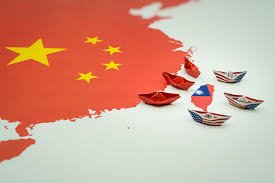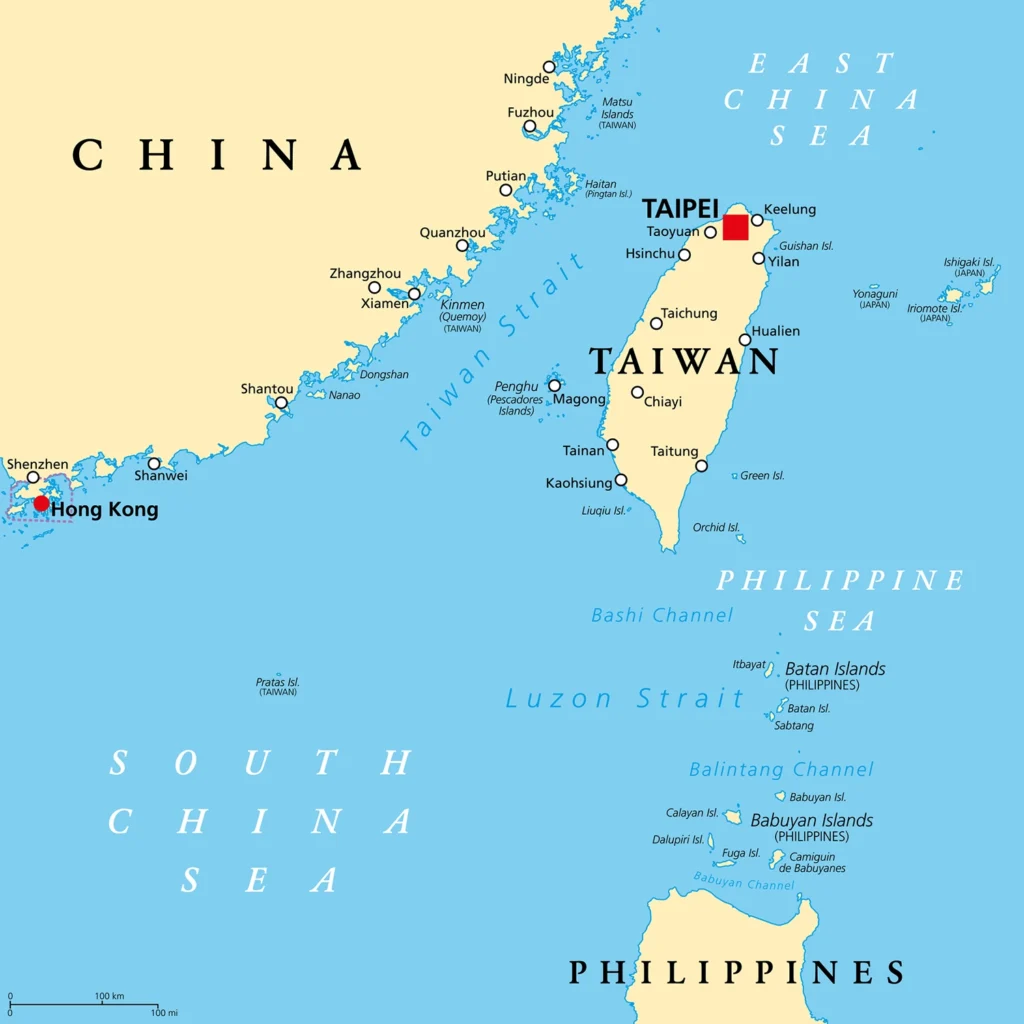The China-Taiwan issue is a complex and contentious topic with deep historical, political, and socio-economic roots. At its core, it revolves around the dispute between the People’s Republic of China (PRC), commonly known as China, and the Republic of China (ROC), commonly known as Taiwan, over the sovereignty and political status of Taiwan. This issue has significant implications not only for the two entities involved but also for the broader geopolitical landscape of East Asia and beyond. To provide a comprehensive understanding, let’s delve into various aspects of the China-Taiwan issue, including historical background, current status, key stakeholders, diplomatic dynamics, and potential future scenarios.
Historical Background of China and Taiwan
The roots of the China-Taiwan issue can be traced back to the Chinese Civil War (1927-1949) between the Chinese Communist Party (CCP) and the Kuomintang (KMT) nationalist government. The conflict culminated in the victory of the CCP, leading to the establishment of the People’s Republic of China (PRC) on October 1, 1949, under the leadership of Mao Zedong. In contrast, the defeated KMT retreated to the island of Taiwan and continued to govern as the Republic of China (ROC), maintaining its claim as the legitimate government of all of China.
For several decades, both the PRC and the ROC claimed to be China’s sole legitimate government. This stance was bolstered by Cold War dynamics, with the United States recognizing the ROC as the legitimate representative of China until the early 1970s. However, in 1971, the United Nations General Assembly passed Resolution 2758, recognizing the PRC as “the only legitimate representative of China to the United Nations” and expelling the ROC.
One China Policy
The One China policy is a diplomatic principle that acknowledges only one sovereign state named China, of which both the PRC and the ROC claim to be the legitimate government. Under this policy, countries that maintain diplomatic relations with the PRC must sever official ties with Taiwan, and vice versa. The One China principle has been a cornerstone of China’s foreign policy, and adherence to it is often a prerequisite for diplomatic relations with the PRC.
Current Status Between China and Taiwan
Presently, Taiwan operates as a de facto independent entity with its government, military, and economy. It exercises control over its territory and conducts its own domestic and foreign affairs. However, it faces diplomatic isolation as most countries, under pressure from China, do not officially recognize it as a sovereign state.

Despite this, Taiwan has developed robust economic and cultural ties with various countries around the world, and it plays a significant role in regional trade and security. The United States, in particular, maintains unofficial relations with Taiwan through the Taiwan Relations Act, which pledges to provide the island with defensive weaponry and support while acknowledging the One China principle.
Cross-Strait Relations
Cross-strait relations refer to the interactions and tensions between mainland China and Taiwan. Over the years, these relations have experienced fluctuations, influenced by factors such as changes in leadership, domestic politics, economic developments, and external pressures.
Under President Xi Jinping, China has taken a more assertive stance towards Taiwan, emphasizing reunification as a core national objective and refusing to rule out the use of force to achieve it. China has employed a combination of diplomatic, economic, and military measures to increase pressure on Taiwan and limit its international space.
Meanwhile, Taiwan’s approach to cross-strait relations has been characterized by a delicate balancing act. While the Taiwanese government under President Tsai Ing-wen of the Democratic Progressive Party (DPP) advocates for maintaining the status quo and preserving Taiwan’s de facto independence, it also seeks to avoid escalating tensions with China that could lead to conflict.
Key Stakeholders:
Several key stakeholders play a role in the China-Taiwan issue, each with its interests, concerns, and objectives:
- China (PRC): China views Taiwan as an integral part of its territory and considers reunification a non-negotiable goal. It seeks to compel Taiwan to accept eventual unification through a combination of economic incentives, diplomatic pressure, and military deterrence.
- Taiwan (ROC): Taiwan’s primary objective is to maintain its de facto independence and preserve its democratic way of life. While it seeks to strengthen its international presence and defend against Chinese coercion, it also remains open to dialogue and engagement with Beijing under certain conditions.
- United States: The United States has a significant interest in the stability of the Taiwan Strait, viewing Taiwan as a strategic partner and a key ally in the region. While it adheres to the One China policy, it maintains unofficial relations with Taiwan and has pledged to support its self-defense capabilities.
- Regional Actors: Countries in the Asia-Pacific region, such as Japan, South Korea, and ASEAN member states, also have a stake in the China-Taiwan issue due to its implications for regional security and stability. These countries often seek to balance their relations with China and Taiwan while avoiding being drawn into the cross-strait conflict.
- International Community: The international community, including the United Nations and various non-governmental organizations, plays a role in shaping the discourse around the China-Taiwan issue and influencing the behavior of relevant actors. Countries and organizations may choose to support either China or Taiwan based on their strategic interests, values, and principles.

Diplomatic Dynamics:
Diplomatic relations between China and Taiwan are heavily influenced by the One China principle and the competition for international recognition. China employs a strategy of diplomatic isolation against Taiwan, pressuring countries to sever official ties with Taipei and adhere to the One China policy.
In recent years, China has intensified its efforts to poach Taiwan’s few remaining diplomatic allies, often by offering economic incentives and investment packages. This “diplomatic squeeze” has led to a steady decline in the number of countries that recognize Taiwan, further isolating the island on the international stage.
In response, Taiwan has sought to strengthen its informal diplomatic relations with countries that support its interests, including the United States, Japan, and European Union member states. It also actively participates in international organizations and forums under the name “Chinese Taipei,” although Chinese objections often limit its participation.
Security Dynamics:
Security considerations are paramount in the China-Taiwan issue, given the potential for military conflict and the presence of significant military forces on both sides of the Taiwan Strait. China has significantly expanded its military capabilities in recent years, including its naval, air, and missile forces, with a specific focus on countering potential U.S. intervention in a Taiwan contingency.
Taiwan, for its part, maintains a capable military equipped with modern weaponry, including advanced fighter jets, naval vessels, and missile defense systems. It also benefits from security cooperation with the United States, which provides Taiwan with defensive arms and assistance to enhance its deterrence posture.
Despite efforts to maintain stability and prevent conflict, the risk of inadvertent escalation remains a concern due to the proximity of military forces and the potential for miscalculation or miscommunication. Both sides engage in regular military exercises and maneuvers, increasing the likelihood of accidental confrontations.
Future Scenarios:
The future of the China-Taiwan issue is uncertain and contingent on various factors, including domestic politics in China and Taiwan, changes in regional dynamics, and shifts in the global balance of power. Several potential scenarios could unfold:
- Continued Status Quo: Taiwan maintains its de facto independence while avoiding actions that provoke China, and cross-strait relations remain stable. Both sides refrain from escalating tensions, and Taiwan continues to engage with the international community within existing constraints.
- Peaceful Reunification: China and Taiwan peacefully resolve the cross-strait dispute through negotiations and dialogue. This scenario could involve the implementation of a “one country, two systems” framework similar to Hong Kong, whereby Taiwan retains a high degree of autonomy within the PRC.
- Unilateral Declaration of Independence: Taiwan declares formal independence from China, leading to a potential military response from Beijing. This scenario carries a high risk of conflict and could draw in regional and international actors, including the United States, depending on their respective commitments to Taiwan’s security.
- Military Conflict: Tensions between China and Taiwan escalate into open conflict, either as a result of a miscalculation or a deliberate decision by one or both sides. This scenario would have severe implications for regional stability and could involve significant loss of life and economic disruption.
- International Intervention: External actors, such as the United States or regional powers, intervene in the China-Taiwan issue to prevent conflict or support one side against the other. This scenario could further exacerbate tensions and lead to a broader confrontation with global ramifications.
The China-Taiwan issue remains a complex and volatile challenge with profound implications for regional security and global stability. While efforts to maintain the status quo and prevent conflict continue, the underlying tensions and competing interests between China and Taiwan persist, resolving the cross-strait dispute an ongoing and uncertain process. Effective diplomacy, dialogue, and confidence-building measures will be essential in managing the China-Taiwan issue and reducing the risk of conflict in the future.
